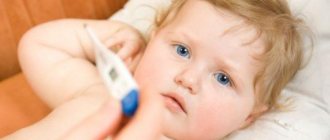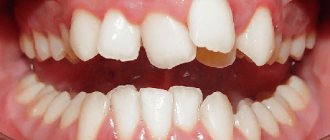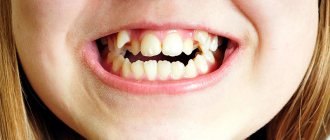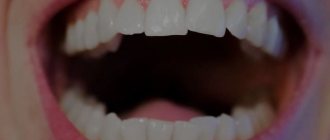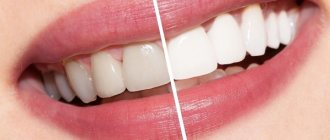Snot (nasal mucus) is a viscous muconasal secretion that has the consistency of mucus and is produced by the secretory glands of the nasal mucosa. The discharge of snot from the nose is called a runny nose or rhinorrhea (one of the symptoms of catarrhal rhinitis). Rhinitis in infants can have different etiologies and be the result of infectious diseases, allergic reactions, atrophic and neurovegetative processes.
Runny nose in infants is a common disease
Snot during teething is most often not associated with pathological changes in the functioning of the airways, and the causes of rhinorrhea during this period are physiological in nature. The use of traditional antiviral, antihistamine and antibacterial drops to treat such a runny nose is unjustified until the true cause of the appearance of snot is determined and the general condition of the child is assessed.
Snot during teething
Rhinorrhea during teething: causes
Baby teeth usually appear in babies at the age of 5-9 months, while the process of teething can begin much earlier - from 3-4 months. The gradual eruption of dental crowns is always accompanied by spontaneous opening of the gums.
Baby teething
This process is quite painful and gives the child a lot of unpleasant sensations and discomfort, so most children during this period become whiny, restless, and capricious. At the same time, almost 60% of infants experience another symptom that is considered characteristic of the eruption of baby teeth in the first year of life - a runny nose.
Teething is often accompanied by a runny nose
There are several reasons that can provoke the appearance of rhinorrhea during teething.
The process and timing of teething depend not only on inherited genetic parameters; the timing of teething can be influenced by external and internal factors. For example, climatic conditions, the course of pregnancy and the nature of nutrition of the mother and child after birth, illnesses of the baby, and more. Read more about the teething schedule for infants on our website.
Reduced immunoresistance
Weakening of immune function during the eruption of dental crowns is a natural reaction of the body to an internal factor that is a mediator of stress. Dentists note that most often, a pronounced immune disorder during this period is observed in children whose teeth appear too early (before 4 months), or, conversely, too late (after 10 months). The risk of a viral or bacterial infection is higher if the following factors are present:
- insufficient hygiene of the baby’s hands and skin;
- poor processing of children's bedding and underwear, toys, feeding utensils, pacifiers;
- irregular wet cleaning in the apartment (especially in the children's room);
- non-compliance with standards for ventilation and humidification of rooms in which the child spends most of his time;
- frequent appearance in crowded places.
Oral hygiene in children
If a child begins to teethe, contact with strangers or people who have recently had a respiratory disease should be temporarily prevented, since the risk of infection during this period is quite high for all children.
While your child is teething, it is worth protecting him as much as possible from possible airborne infections.
Note! Compliance with increased preventive measures during teething is recommended for children suffering from congenital autoimmune diseases (cystic fibrosis, agranulocytosis, diabetes mellitus, etc.).
Strengthening secretory function
A natural protective mechanism during teething is to increase the activity of secretory glands that produce salivary and muconasal secretions. Rhinorrhea is observed mainly in infants with manifestations of hypersalivation (increased salivation), since anatomically the nasopharynx and oropharynx have a similar structure and are located in close proximity to each other.
A runny nose usually bothers babies with increased salivation.
In this case, muconasal mucus is produced by surface epithelial cells located in the mucous membranes of the nose. The secretion contains not only water, mucus and epithelial particles, but also mucin - gel-like high molecular weight mucoproteins that contain a large amount of acidic polysaccharides. If the secretory glands work too actively, the amount of mucus secreted increases several times, which leads to its removal from the nasal cavity through the anatomical openings - the nostrils. In some cases, such snot can flow into the throat along the back wall of the pharynx, causing a cough, which many parents perceive as a symptom of a respiratory infection.
- How to deal with unpleasant odors in the home of a seriously ill person
Coughing may be normal during teething
Stimulation of blood circulation
During teething, the flow of blood and lymph to the vessels located in the oral cavity increases. Increased blood and lymph circulation also occurs in the vessels of the nasal cavity, which has a stimulating effect on the secretory glands and causes increased secretion of muconasal mucus, which is commonly called snot.
Clinical features
“Dental” rhinitis” (“dental runny nose”), which is a type of physiological runny nose, must be distinguished from pathological rhinitis, which can be infectious, allergic and neurovegetative in nature. The physiological secretion of nasal mucus against the background of changes occurring in the child’s body during the period of teething crowns has certain clinical features that need to be paid attention to. Such a runny nose is not accompanied by an increase in temperature, the release of thick yellow, brown or green snot, or the appearance of allergic reactions in the form of a rash or itchy skin.
If the baby has snot and saliva, but there is no fever, it means that another baby tooth will appear soon.
In this case, a dental runny nose may well occur against the background of a slight change in stool due to increased secretion of the salivary glands and the ingestion of a large amount of saliva, which mixes with food and dilutes its consistency. A deterioration in general well-being is also possible, since the process of teeth appearing is quite painful and unpleasant for the child. Physiological rhinitis may also be accompanied by other pathological symptoms, for example, cough, sleep disturbance or refusal to eat, but only a doctor can establish their relationship with the possible presence of infectious pathogens in the body.
Your baby may be fussy and have trouble sleeping during teething.
Treatment of infectious diseases
If the runny nose is thick, yellow or green, the mucus is difficult to clear and makes breathing significantly more difficult, and there are other alarming symptoms (dry cough, high temperature), then you need to call an ambulance or a local pediatrician. Self-medication in this case is unacceptable.
To eliminate the problem, in addition to rinsing the nose with saline solutions, the doctor may prescribe specialized products for the throat (Lazolvan, Sinekod, Lizobakt) and nose (Protorgol, Pinosol and others), painkillers and antipyretics (Nurofen ", "Panadol"), antiviral ("Viferon"). To recover faster, the child needs bed rest and rest.
Comparative characteristics
To make it easier for parents to navigate the clinical features of rhinitis in infants, the table below provides a comparative description of various types of runny nose with characteristic symptoms and signs.
How to distinguish dental rhinitis from pathological runny nose?
| Criteria (signs and symptoms) | Physiological secretion of nasal mucus | Infectious rhinitis | Allergic rhinorrhea |
| Appearance of snot | The snot has a watery, transparent consistency that persists even after several days. They have no color. | With viral infections, snot is usually watery and has increased viscosity and fluidity. If a bacterial infection is added to a viral infection, the snot becomes thick and acquires a yellowish, green or swampy tint. | The discharge is transparent, has a low degree of viscosity, and some of it causes irritation to the skin under the nose. |
| Number of snot | Moderate to very heavy. | Light to moderate. | From light to very heavy. |
| Smell of mucus | Absent. | With bacterial infections or severe atrophy of the nasal mucosa, the discharge may have a strong, foul odor. | Absent. |
| Factors preceding the appearance of snot | Mucus is released randomly. | The appearance of rhinorrhea is usually preceded by hypothermia, contact with a sick person, or other risk factors for viral and bacterial infections. | A runny nose occurs after contact with various pathogens (dust, animal hair, some foods, etc.). |
| Cough | Available. | Appears almost always. | Possible, often accompanied by itchy nose and sneezing. |
| Body temperature | Normal (moderate hyperthermia is possible within the range of low-grade fever, associated with the fact of painful teething). A physiological increase in temperature to 37.3°-37.5°C lasts no more than 1-2 days. | Increased (may exceed low-grade levels and be accompanied by febrile fever). | Normal. |
An infectious runny nose is also characterized by nasal congestion, impaired nasal breathing, and the appearance of other symptoms of various respiratory diseases.
If your child has a fever, you should call a pediatrician
With allergic rhinorrhea, a child may experience skin itching, rashes and other signs of allergy typical for this group of diseases.
What parents need to do
First of all, parents must understand that at the time of teething, the child’s body is weakened, and therefore vulnerable to various types of infections. And the baby must be protected from them: avoid contact with sick people, watch what the child puts in his mouth, and maintain hygiene. And, of course, carefully monitor the child’s well-being, since the same runny nose, cough and upset stomach, depending on the degree of manifestation, can be either normal symptoms of teething or the result of a disease.
If you have a cough
- Give your baby a cool teether.
- Try massaging your gums.
- Raise the baby's head so that phlegm flows down his larynx, he does not choke on it, and this, in turn, would not lead to coughing.
- Using a pipette, drop a bactericidal property into the child’s nose or, as an easy alternative to this, a decoction of medicinal herbs. This will not only prevent the accumulation of sputum, but also prevent the mucous membrane from drying out.
Optionally, you can give your baby immunostimulating drugs that will help cope with the weakening of the body. But only a pediatrician can prescribe these drugs; self-medication is not only harmful, but even downright dangerous.
If you have a runny nose
To prevent the child's breathing from becoming difficult, excess mucus should be removed with a nasal aspirator or a syringe bulb. And to protect the mucous membrane from drying out and softening dried mucus, it is effective to wash and moisten it with clean water or saline solution (the latter has a disinfecting effect).
Sprays for runny nose and nasal congestion are described in this article.
Other signs of teething
If a baby has clear snot running from his nose for several days in a row, but the child himself feels well and the body temperature remains within normal limits, it is necessary to carefully examine the oral cavity and skin. If pathological rashes and scratching marks are detected on the skin, you should immediately contact an allergist. If everything is fine with the skin, you should conduct a visual examination of the oral cavity. If, along with a runny nose, swelling and redness of the gums are noticeable, most likely the discharge is associated with the process of teething.
- What does snot with blood mean when you have sinusitis? How do you know when you need to see a doctor?
The following symptoms can also be considered signs of the imminent appearance of the first teeth:
- increased secretion of saliva (hypersalivation);
- itching of the gums (the child constantly pulls surrounding objects into his mouth and gnaws on them);
The child massages his gums, sucking and trying to gnaw toys and his fingers with his gums
- stool liquefaction;
- crying and restless behavior during feeding (the child should not twist his legs or pull them towards his stomach);
The baby may not eat well or cry while eating
- the appearance of dense bumps on the surface of the nose.
If the lump turns white, or there are clear signs of gum opening around it, it means that the tooth will erupt within the next 5-7 days.
The lump becomes white, or there are clear signs of gum opening around it
Creating an indoor microclimate
How to treat snot during teething? Simple actions by adults can help with this. The room where the baby is located must have appropriate conditions - air temperature within 18-23 degrees Celsius, air humidity within 40-70%. Ventilate the room more often, turn down the heating radiators in the cold season, humidify the air if necessary (using a humidifier). Then the mucus from the nose will not thicken and will separate well.
Regular maintenance of the nursery is necessary
Is it necessary to treat “tooth” snot?
One of the most common mistakes that many parents make if their child develops snot is to independently use various medications to combat this problem. The first place in this list is traditionally occupied by various anticongestive drugs that cause constriction of blood vessels and are intended to relieve swelling in the nasal cavity. Such drugs include drops “Nazivin”, “Naphthyzin”, “Xylometazoline” and other drugs with a similar mechanism of action.
The main component of the drug is oxymetazoline hydrochloride
Anticongestants have a large number of side effects, the main of which are the rapid addictive effect and gradual atrophy of the nasal mucosa, which can ultimately lead to the development of chronic atrophic rhinitis. The use of these medications is justified only in severe cases, when the child cannot breathe normally due to severe swelling of the mucous membrane, which happens mainly with infectious rhinitis. Antihistamines that block the production of the main mediator of inflammatory reactions (histamine) are also unacceptable for the treatment of physiological rhinorrhea associated with teething.
Important! Despite the fact that the use of traditional remedies for snot associated with teething is not recommended, it is impossible to completely refuse treatment, since stagnation of mucus in the nose creates an excellent breeding ground for various bacteria and can cause serious complications: otitis media, bronchitis, etc. .d.
How to solve a problem
So how to treat a child? First, you need to reduce the unpleasant painful sensations as much as possible, and a slightly cooled teether, which we talked about just above, will help with this. Experts also recommend doing a light gum massage. In some cases, you can resort to the help of special ointments and gels, however, the use of pharmaceutical products is allowed only after agreement with the pediatric dentist.
As recognized experts in the field of pediatric dentistry and pediatrics advise, in order to eliminate this unpleasant symptom, you first need to deal with the runny nose. Alternatively, you can purchase a special aspirator and clean out your nasal passages from time to time. Another old proven remedy is a baby pear. When breathing is restored, the intensity of mucus secretion will also decrease. A severe cough usually occurs in children at night, so it is better to rinse the nose before going to bed.
Rinsing the nasal sinuses with special bactericidal solutions, which can be purchased at the pharmacy, but only after the approval of the attending physician, will also help. Such remedies effectively relieve dry nose and copious accumulations of phlegm.
On a note! Many parents are interested in the question: does coughing occur during the change of teeth to permanent ones? Yes, similar symptoms can be observed in adolescents during the formation of a permanent dentition, including the growth of molars. The reasons are the same - the body undergoes changes, against the background of which the immune defense decreases. Washing the nasal passages with a light saline solution and restorative therapy will help cope with the problem.
The tooth came out, but the runny nose does not go away
If the tooth has already erupted, but the runny nose still does not go away, and the child feels satisfactory, his body temperature is normal, and the snot retains a watery consistency, perhaps the reason is improper hygienic care and non-compliance with sanitary standards. For the normal functioning of the nasal mucosa, constant hydration is necessary: moistened epithelium effectively binds particles of dust and dirt and removes them from the nasal cavity, preventing them from penetrating further into the airways.
To create physiologically correct conditions for normal functioning of the mucous membranes, it is necessary:
- maintain the required temperature in the children's room (about 20°-22°C for games and 16°-18°C for sleeping);
- ventilate the room at least 6-8 times a day, each ventilation should last about 10-15 minutes;
Don't forget to ventilate the nursery
- regularly carry out wet cleaning, remove dust from furniture, clean toys and carpets (ideally, it is better to remove carpets, thick curtains, books and soft toys from the baby’s room);
- Do not use disinfectants during cleaning (plain water is fine).
Do wet cleaning at least three times a week
Strengthening the immune system is also of great importance, which consists of compliance with the vaccination calendar and the introduction of complementary foods, frequent walks, adequate temperature and movement conditions, and hardening procedures.
Video – Komarovsky about runny nose and teething
Rhinorrhea (snot) during teething is a very common occurrence that should not be confused with an infectious runny nose. Under no circumstances should you give your child antiviral drugs, immunomodulators, antihistamines and anticongestive drugs without consulting your doctor. In most cases, such a runny nose goes away on its own after teething, and to relieve it, it is enough to adhere to a certain hygiene regimen. Read the article for strong painkillers for toothache.
- How long does it take for drugs to leave the body?
